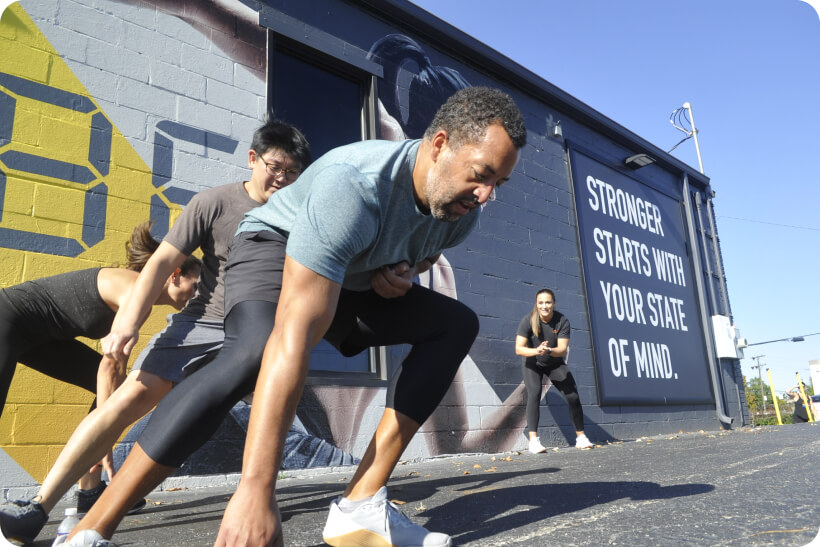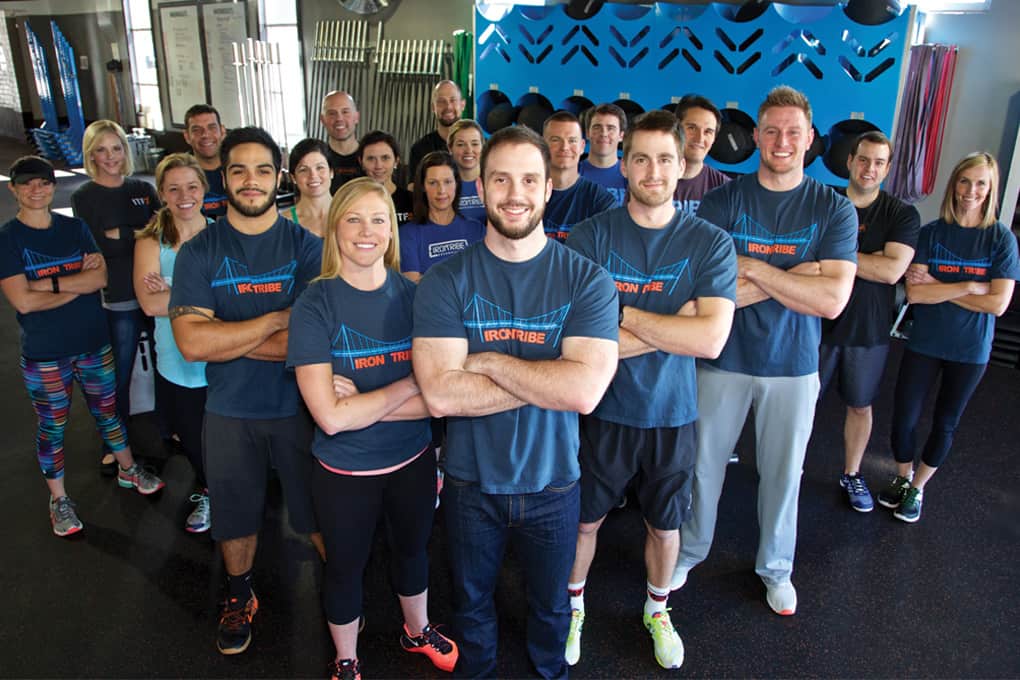Exercise Daily – Maintaining a healthy lifestyle can be challenging in today’s fast-paced world. With busy schedules, demanding careers, and the allure of convenience foods, it’s easy to let our physical well-being fall by the wayside. However, prioritizing our fitness is not just about aesthetics; it’s about investing in our overall health and well-being. Empower Your Fitness journey can seem daunting, but by setting clear goals, tracking your progress, and embracing challenges, you can transform your relationship with exercise and achieve sustainable success.
Embark on Your Fitness Journey with Clear Goals
The first step towards fitness success is setting clear and well-defined goals. Goals provide direction, motivation, and a sense of accomplishment as you progress. However, not all goals are created equal. To ensure your goals are achievable and lead to lasting success, adopting the SMART goal-setting framework is crucial.
The Power of Goal Setting
Goals provide a roadmap for your fitness journey, guiding your actions and keeping you focused on your desired outcomes. They serve as a source of motivation, helping you push through challenging moments and maintain your commitment to self-improvement. When you achieve your goals, you experience a sense of accomplishment that reinforces positive behaviour and fuels your desire to strive for new heights.
Identifying Your Fitness Motivations
Before diving into goal setting, it’s essential to identify your underlying motivations for pursuing fitness. What drives your desire to improve your physical well-being? Is it to enhance your appearance, boost energy levels, reduce stress, or prevent chronic health conditions? Identifying your motivations will help you formulate goals that resonate with your deeper values, making them more meaningful and sustainable.
SMART Goals: Setting Goals for Success
SMART goals are Specific, Measurable, Achievable, Relevant, and Time-bound. Adhering to these criteria increases your chances of achieving your fitness aspirations.
Specific: Clearly define your goal, leaving no room for ambiguity. Instead of saying, “Get fit,” specify “Run a 5K in under 30 minutes.“
Measurable: Establish quantifiable metrics to track your progress. This could be weight loss, increased endurance, or improved flexibility.
Achievable: Set realistic and attainable goals within your capabilities and limitations. Don’t overextend yourself; set goals that challenge you without setting yourself up for failure.
Relevant: Ensure your goals align with your overall fitness aspirations and motivations. Don’t chase arbitrary goals that lack personal significance.
Time-bound: Assign a deadline to each goal to create a sense of urgency and promote timely action.
Examples of SMART Goals for Fitness
- Lose 10 pounds in 6 months.
- Increase running distance from 1 mile to 3 miles within three months.
- Complete 20 push-ups in a row by the end of the year.

Tracking Your Progress: The Path to Success
Tracking your progress is an essential component of any successful fitness journey. It provides valuable insights into your performance, allowing you to identify areas for improvement and celebrate your accomplishments. By consistently monitoring your progress, you stay motivated and on track towards reaching your goals.
The Importance of Tracking Progress
Tracking your progress serves several key purposes:
Quantifies Your Efforts: Tracking allows you to quantify your progress, providing concrete evidence of your hard work and dedication. This visual representation of your accomplishments can be highly motivating and reinforce your commitment to your fitness journey.
Identifies Strengths and Weaknesses: Tracking data can help you identify your strengths and areas for improvement. This self-assessment allows you to tailor your workouts and nutrition strategies to better suit your needs and goals.
Identifies Plateaus and Adaptations: Tracking your progress can help you identify plateaus and periods when your progress stalls or slows down. Understanding these plateaus can prompt you to adjust your training or nutrition to break through these barriers and continue making progress.
Motivates and Sustains Engagement: Tracking provides a sense of accomplishment and progress that boosts motivation and keeps you engaged in your fitness journey. When you see tangible results from your efforts, you’re more likely to maintain your commitment and keep pushing forward.
Choosing the Right Tracking Methods
Several methods exist for tracking your fitness progress. Some of the most common include:
Journaling: Tracking your workouts, weight, and other relevant metrics in a journal can provide a detailed and personalized record of your progress.
Fitness Apps: Numerous fitness apps available for smartphones and wearable devices can track your workouts, heart rate, distance, and other metrics, providing a convenient and user-friendly way to monitor your progress.
Progress Photos: Taking progress photos at regular intervals can help you visualize your physical transformation and track the changes in your body composition.
Fitness Trackers: Fitness trackers, such as smartwatches and fitness bands, can automatically track various metrics, including steps, calories burned, and heart rate, providing real-time feedback on your progress.
Journaling: Recording Your Fitness Journey
Journaling is a simple yet effective way to track your fitness progress. You create a well-documented record of your journey by regularly recording your workouts, meals, and any relevant observations. This personalized journal can serve as a valuable tool for self-reflection and motivation.
Here are some tips for effective journaling:
Set a regular time to journal: Dedicate a specific time each day or week to reflect on your fitness activities and progress.
Be as detailed as possible: Record the type of workout, duration, intensity, and any notable observations or challenges.
Track your food intake: Monitor your calorie intake, macronutrient breakdowns, and portion sizes.
Note any changes in your energy levels, mood, or overall well-being.
Reflect on your progress: Celebrate your achievements and identify areas for improvement.
Fitness Trackers and Apps: Technology to Your Advantage
Technology has revolutionized fitness tracking, providing many tools that can help you monitor and manage your progress. Fitness trackers and apps offer a convenient and user-friendly way to track various metrics, including heart rate, steps, distance, calories burned, and workouts. These devices can also provide personalized insights and recommendations based on your data.
Here are some benefits of using fitness trackers and apps:
Real-time tracking: Receive real-time feedback on your progress during workouts.
Data analysis: Analyze your data to identify trends, patterns, and areas for improvement.
Personalized recommendations: Receive personalized guidance and training plans based on your data.
Motivational reminders: Set goals, receive notifications, and stay on track with personalized reminders.

Embracing Challenges and Overcoming Obstacles
The path to fitness success is not without its challenges. Setbacks and obstacles are inevitable, but they don’t have to derail your progress. By embracing challenges and developing effective strategies for overcoming obstacles, you can maintain momentum and achieve your fitness goals.
Acknowledging and Accepting Setbacks
Setbacks are a natural part of any journey. Various factors, such as injuries, illness, or external life events can cause them. It’s important to acknowledge and accept setbacks without dwelling on them. Instead, use them as opportunities to learn, adapt, and refine your approach.
Strategies for Overcoming Fitness Roadblocks
Here are some strategies for overcoming fitness roadblocks:
Take a break: Sometimes, a short break can be beneficial to allow your body to recover and prevent overtraining.
Adjust your goals: If your current goals seem too ambitious, adjust them to be more realistic and achievable.
Focus on the process: Don’t get discouraged by temporary setbacks; focus on the long-term process of improving your fitness and health.
Seek support: Surround yourself with supportive friends, family, or a fitness community that encourages and motivates you.
Reward yourself: Celebrate your accomplishments to keep yourself motivated and reinforce positive behaviour.
Seeking Support: The Power of a Community
Fostering a supportive community is crucial for overcoming challenges and staying on track with your fitness goals. Surrounding yourself with like-minded individuals who share your passion for fitness can provide encouragement, motivation, and a sense of belonging.
Join a fitness class or group: Engage in group activities like fitness classes, running clubs, or sports leagues to connect with like-minded individuals and share your fitness journey.
Leverage social media: Join online fitness communities or follow fitness influencers who can inspire and motivate you.
Consider hiring a personal trainer: Working with a qualified personal trainer can provide personalized guidance, support, and accountability.
Celebrating Achievements: Rewarding Yourself for Progress
Along your fitness journey, it’s essential to acknowledge and celebrate your achievements, no matter how small they may seem. Celebrating your progress can boost motivation, reinforce positive behaviour, and engage you in your fitness journey.
Set small milestones: Break down your larger fitness goals into smaller, achievable milestones. Celebrating each milestone, no matter how insignificant, can provide a sense of accomplishment and motivate you.
Reward yourself: Treat yourself to small rewards for reaching milestones or making significant progress. These rewards can be non-food-related, such as new workout gear, a massage, or a relaxing activity.
Recognize your efforts: Take the time to appreciate your hard work and dedication. Acknowledge the progress you’ve made and the positive changes you’ve achieved.

Achieving Fitness Success: A Lifestyle Change
Achieving sustainable fitness success requires a holistic approach that goes beyond occasional workouts. It involves transforming your lifestyle to prioritize physical activity, healthy eating habits, and adequate rest and recovery.
Fitness as a Habit: Integrating Exercise into Your Routine
Integrating exercise into your daily routine is crucial for making it a sustainable habit. Find activities you enjoy and gradually increase the frequency and intensity of your workouts.
Make exercise a non-negotiable part of your day: Schedule time for exercise just like you would any other important commitment.
Find activities you enjoy: Explore different fitness activities until you find ones you genuinely enjoy, making exercise more enjoyable and sustainable.
Start small and gradually increase: Don’t overwhelm yourself; start with manageable workouts and gradually increase the duration and intensity as you progress.
Prioritizing Nutrition: Fueling Your Body for Success
Fueling your body with nutritious foods is essential for optimal performance and recovery. Make informed food choices that support your fitness goals and overall well-being.
Prioritize whole, unprocessed foods: Fill your plate with fruits, vegetables, whole grains, and lean protein sources.
Read food labels carefully: Understand the nutritional content of your foods.
Control portion sizes: Mindfully regulate the food you consume to avoid overeating.
Rest and Recovery: The Importance of Rejuvenation
Adequate rest and recovery are crucial for maximizing your fitness gains and preventing injuries. Allow your body to repair and recharge to optimize performance.
Get enough sleep: Aim for 7-8 hours of quality sleep each night to allow your body to rest and recover.
Schedule rest days: Incorporate rest days into your workout routine to allow your body to recover and prevent overtraining.
Maintaining Motivation: Keeping the Spark Alive
Maintaining motivation is essential for keeping your fitness journey on track. Here are some tips for staying inspired and engaged:
Find a fitness buddy: Enlist a friend or family member to join your fitness journey. Having a workout partner can provide motivation, accountability, and camaraderie.
Vary your workouts: Keep your workouts fresh and exciting by incorporating different exercises, activities, and routines. This helps prevent boredom and keeps your body challenged.
Set realistic goals: Set achievable goals that align with your fitness level and capabilities. Break down larger goals into smaller, more manageable steps to make progress more visible.
Track your progress: Visualize your progress by tracking your workouts, weight, and other relevant metrics. This helps you see how far you’ve come and stay motivated to continue.
Reward yourself: Recognize and celebrate your achievements along the way. Treat yourself to non-food-related rewards to reinforce positive behaviour and boost motivation.
Seek inspiration: Surround yourself with positive and inspiring sources, such as fitness magazines, motivational quotes, or inspirational stories of others who have achieved their fitness goals.
Focus on the positive: Shift your focus from weight loss or physical appearance to the overall benefits of fitness, such as increased energy levels, improved mood, and enhanced well-being.

Conclusion: Unleashing Your Fitness Potential
Embark on your fitness journey with clarity, commitment, and a willingness to embrace challenges. By setting SMART goals, tracking your progress, and overcoming obstacles, you can transform your relationship with exercise and achieve sustainable fitness success. Remember, motivation is not a destination; it’s a journey. Nurture your motivation by incorporating activities you enjoy, surrounding yourself with supportive individuals, and celebrating your accomplishments. With consistent effort and dedication, you can unlock your full fitness potential and embark on a lifelong health and well-being journey.
FAQs – Empower Your Fitness: Set Goals, Track Progress, Succeed
Q: How can I overcome my fear of the gym?
A: It’s common to feel intimidated by the gym, but it’s important to remember that everyone starts somewhere. Start by visiting the gym during off-peak hours when it’s less crowded and ask a staff member for a tour. Check out group fitness classes, which provide a supportive and motivating environment. And don’t be afraid to ask for help from a trainer or experienced gym-goer.
Q: How can I stay motivated to exercise when not seeing results immediately?
A: Focusing on the long-term benefits of exercise rather than immediate results is important. Exercise can improve your energy levels, mood, sleep quality, and well-being. Track your progress to see your improvements, no matter how small they may seem. And don’t compare yourself to others; everyone’s journey is unique.
Q: What are some tips for creating a realistic and achievable fitness plan?
A: Start slowly and gradually increase the intensity and duration of your workouts as you progress. Focus on activities you enjoy to make exercise more sustainable. Set realistic goals that align with your fitness level and capabilities. And don’t be afraid to adjust your goals as you progress.
Q: How can I incorporate healthy eating habits into my lifestyle?
A: Make small changes to your diet over time. Start by swapping processed foods for whole, unprocessed options. Read food labels carefully to make informed choices. Cook more meals at home to control ingredients and portion sizes. And find healthy snacks that you enjoy.
Q: How can I make exercise more enjoyable?
A: Find activities you genuinely enjoy, whether dancing, swimming, hiking, or cycling. Explore different fitness classes or group activities. Set realistic goals that align with your interests and preferences. And don’t be afraid to experiment and find what works best for you.





